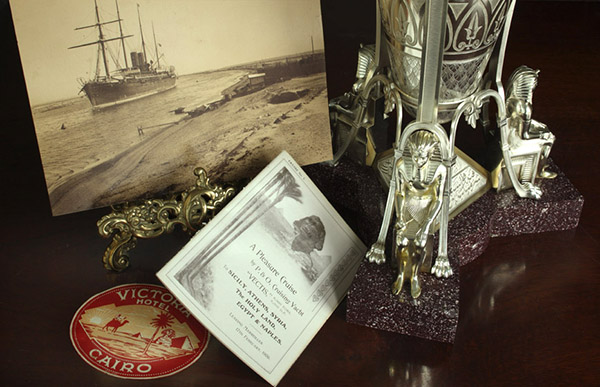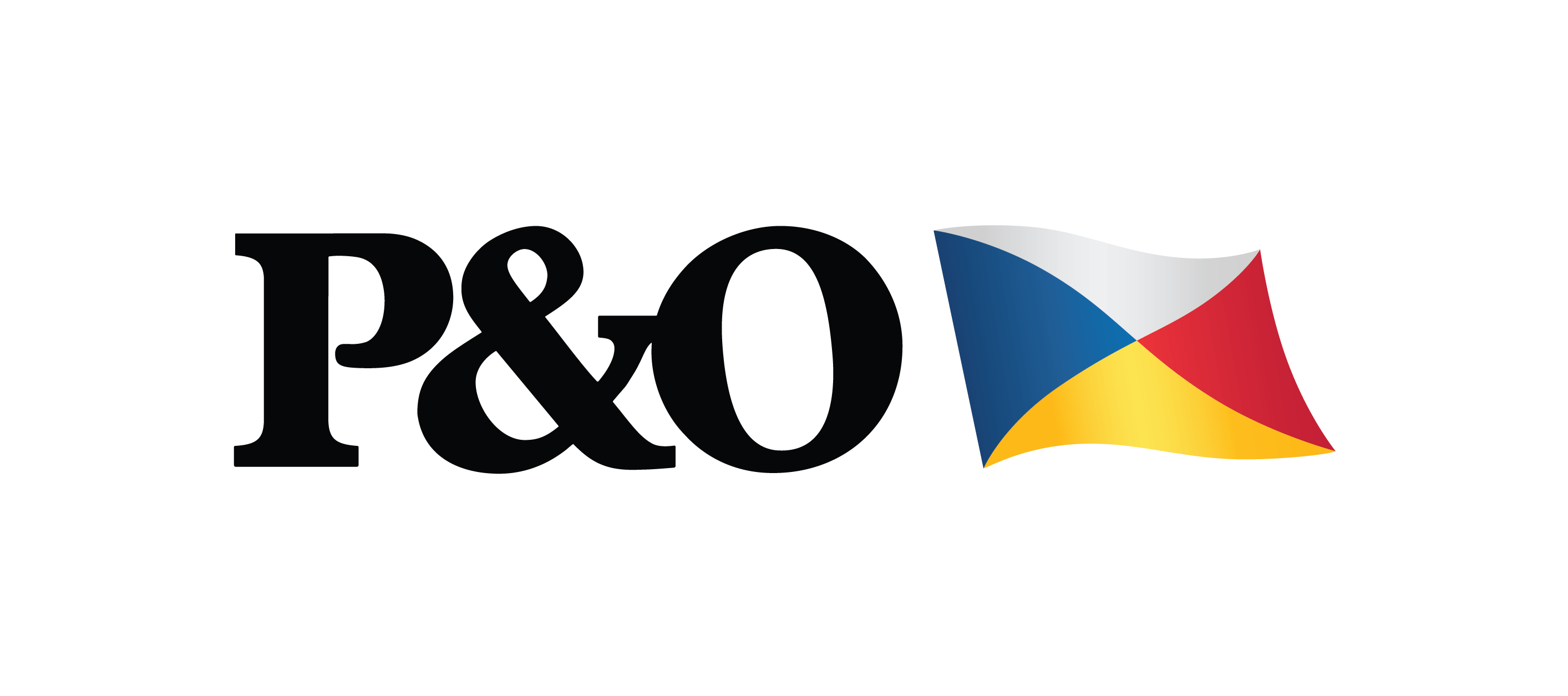P&O 180: Curator's Choice - Striking Silver
In the next of our monthly online articles commemorating our 180th Anniversary, Beth Ellis, Curator of Digital Collections & Web Editor takes a closer look at a beautiful silver French mantel striking clock from 1865 and discovers it's secret connections with Egypt.
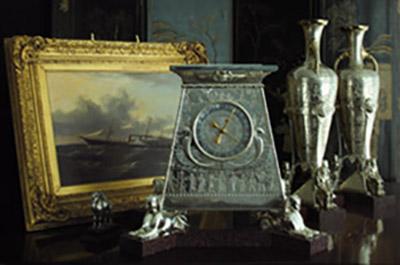
Striking Silver
This French silver mantel striking clock was presented to P&O by the Khedive of Egypt, Ishmail Pacha, in August 1865 as part of a garniture de cheminee consisting of the clock and a pair of vases.
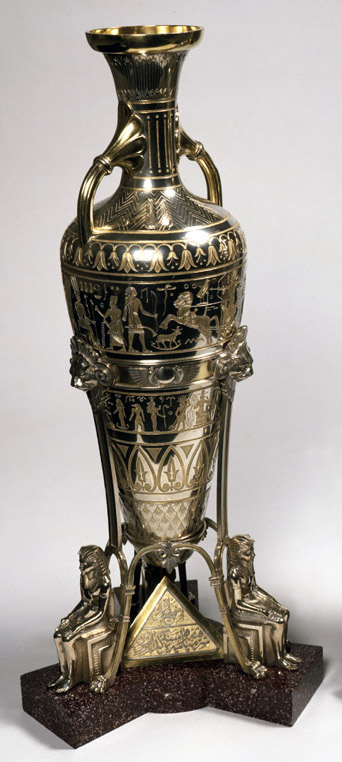
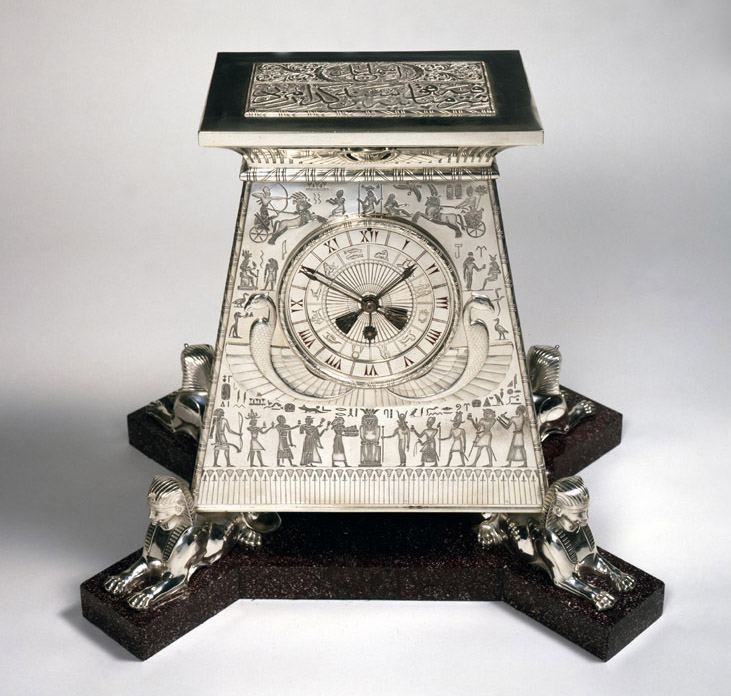
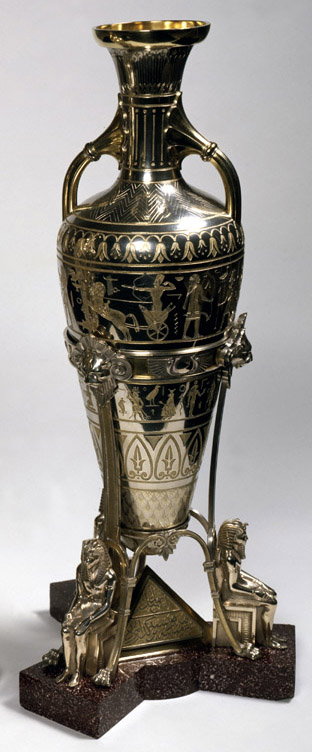
Garniture de Cheminee
The clock itself was made by French clock maker Auguste Pointaux with silver gilt work by Froment Meurice & Cie. It sits on four recumbent Sphinx on a red porphyry base and the Keeper of Egyptian Antiquities at the British Museum wrote to P&O in May 1957 with these comments on the clocks decorative detail:
'The clock is constructed in the form of an ancient shrine with a cavetto cornice and torus roll moulding. It is of a pattern that remained practically unchanged at least from the XV111th Dynasty (c.1450 B.C.) until Roman times with, in all probability, an even longer history. The scenes on the four sides of the clock are inspored by reliefs and paintings in the ancient tombs and temples, but they are not faithful copies. The hieroglyphs in some cases are correct in form but their arrangement is such as to be completely meaningless. I notice that the clock face is inscribed with signs of the zodiac. The winged serpents under the dial are quite imaginary; no such representations occur in Egyptian art. These objects are typical of their time.'
Keeper of Egyptian Antiquities at the British Museum, 1957
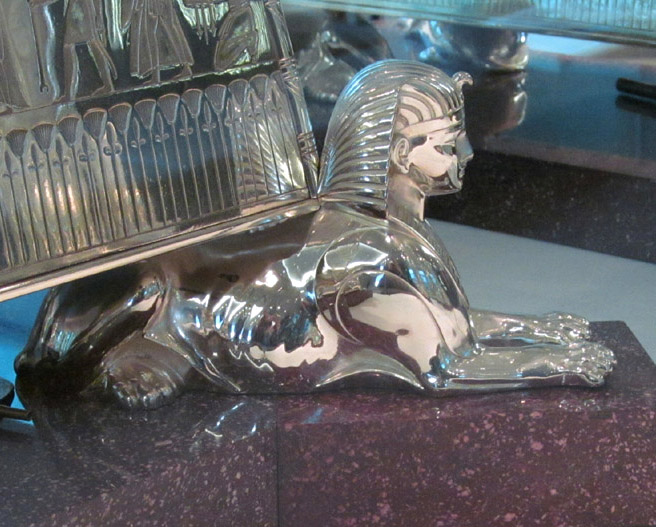
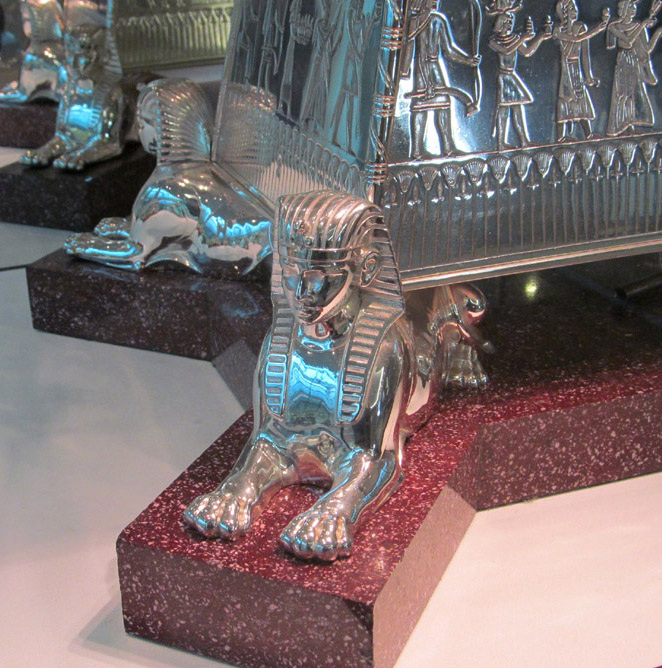
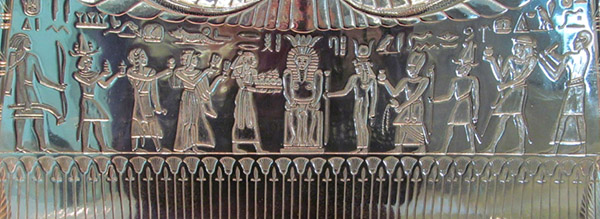
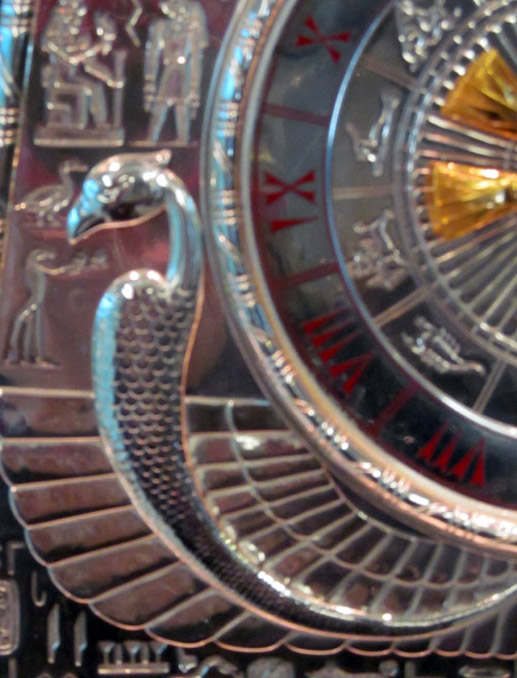
Details of the Sphinx, heiroglyphs and serpent decorations
P&O and Egypt
As early as 1840, P&O enjoyed a good relationship with the various Pachas in Egypt and worked together with the Egyptians to improve the 'overland route' across Egypt.
In the 1840s the route across the desert for the mails and passengers could take three days and was an arduous adventure:
'At last we are off. Four huge vans full of passengers rattled out of the square, with a whoop and a shout, a waving of hats and kerchiefs, and many a hearty farewell, and a safe journey from the bystanders... We dashed through the town in gallant style; the horses galloping and prancing, and our vans pitching and rolling like so many ships in a storm.'
Captain Albert Harvey, 1846
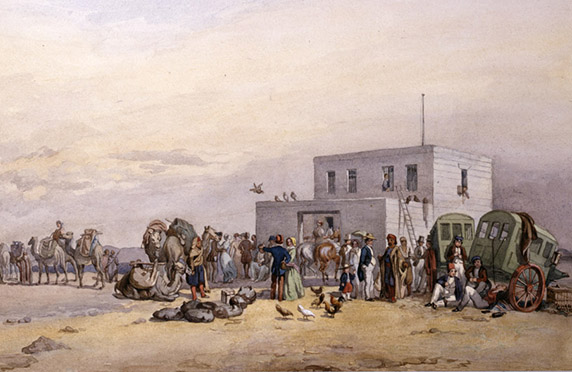
'The Central Station' (above) and 'Mahmoudie Canal' (below) from the watercolour series 'The Route of the Overland Mail to India' by Henry Fitzcook, c.1850
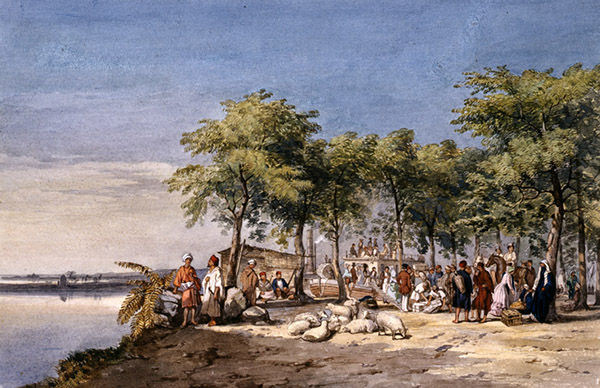
At this time Arthur Anderson (P&O founder and then Chairman) saw the need to establish a good relationship with the Pasha, Egypt’s ruler, without whom little could be accomplished to improve the journey. Initially he saw to it that the passage along the Mahmoudieh Canal was improved by the introduction of a steam tug (P&O’s first twin screw vessel), new Nile steamers and a lock constructed at Atfeh to smooth the transfer from canal to river. Other improvements also included the following as reported by P&O in 1842:
'His Highness has granted the Company firmans for navigating both the Nile and the Canal by Steam - has established telegraphs [signal stations] across the desert; and is now taking measures to erect a Coal Depot at Alexandria, and a large Hotel at Suez, at the expense of teh Egyptian govrnment, the former for the Company's use, and the latter for the accomodation of passengers.'
P&O Annual Report, 30th November 1842
Relationships Formed
In the 1850’s P&O’s involvement extended to financial loans to the Pacha for the construction of the railway from Alexandria to Suez via Cairo. In 1859 the last section of the railway was completed and P&O negotiated a contract to affect the transit of passengers and specie across Egypt.
This gift of the garniture de cheminee was presented to the Company by Ishmail Pacha in appreciation of the part played by P&O in the development of Egypt as the highway of passenger and cargo traffic to the East.
Discover more about the Overland Route and view images from Henry fitzcook’s series of paintings in our online gallery and the Suez Canal in our P&O Timeline.
